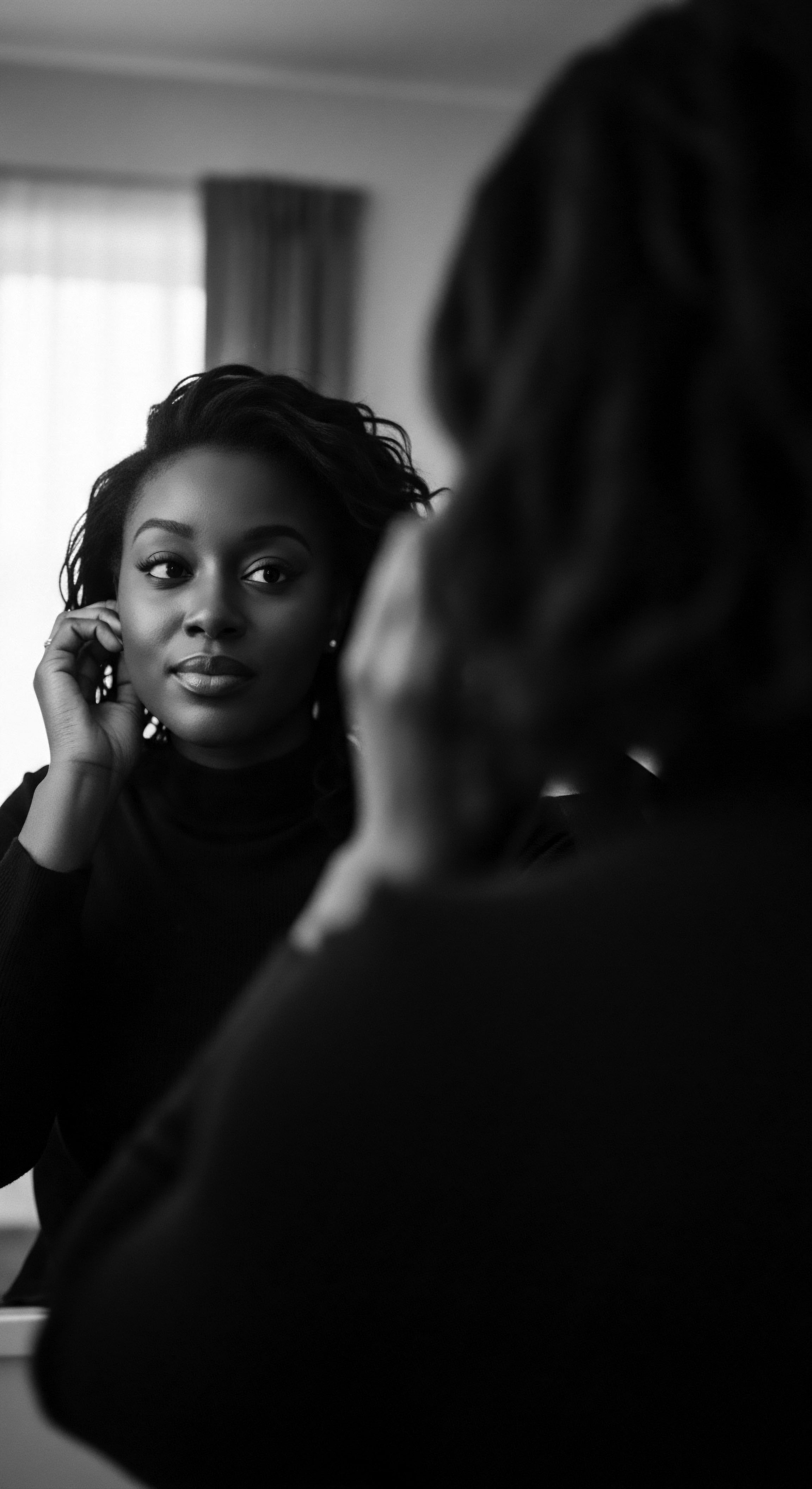
Fundamentals
The Hair Self-Perception, at its most elemental, refers to an individual’s internalized understanding and assessment of their hair. This goes beyond mere visual recognition; it encompasses the feelings, beliefs, and attitudes one holds about their hair’s appearance, texture, health, and its symbolic value. For those whose lineage traces through the vibrant tapestries of textured hair heritage, this internal dialogue with one’s strands holds a particularly profound resonance. It is a dialogue often shaped by generations of shared experience, resilience, and a deep connection to ancestral ways of being.
Understanding the Hair Self-Perception means acknowledging that hair is not simply a biological outgrowth. It serves as a living canvas, a cultural marker, and a personal statement. The initial meaning of this concept, especially for newcomers, begins with recognizing hair as a mirror reflecting inner states and external societal influences. The daily rituals of hair care, the choices made about styling, and even the simple act of touching one’s hair are all informed by this deeply personal and culturally informed perception.
Across various Black and mixed-race communities, the Hair Self-Perception carries layers of historical and communal significance. It speaks to the journey of identity, from the earliest expressions of self to collective affirmations of cultural belonging. The very texture of one’s hair, often categorized by its curl pattern and density, forms a primary lens through which this perception is constructed.
Hair Self-Perception is the deeply personal and culturally informed internal understanding an individual holds about their hair, extending beyond its physical characteristics to encompass emotional, social, and ancestral significance.
Consider the tender moments of a child’s first hair wash, or the shared stories within a salon. These instances are not merely about cleansing or styling; they are foundational experiences that shape a nascent Hair Self-Perception. The whispers of elders, the gentle caress of a parent’s hands through curls, and the admiring glances of community members all contribute to this evolving internal picture.
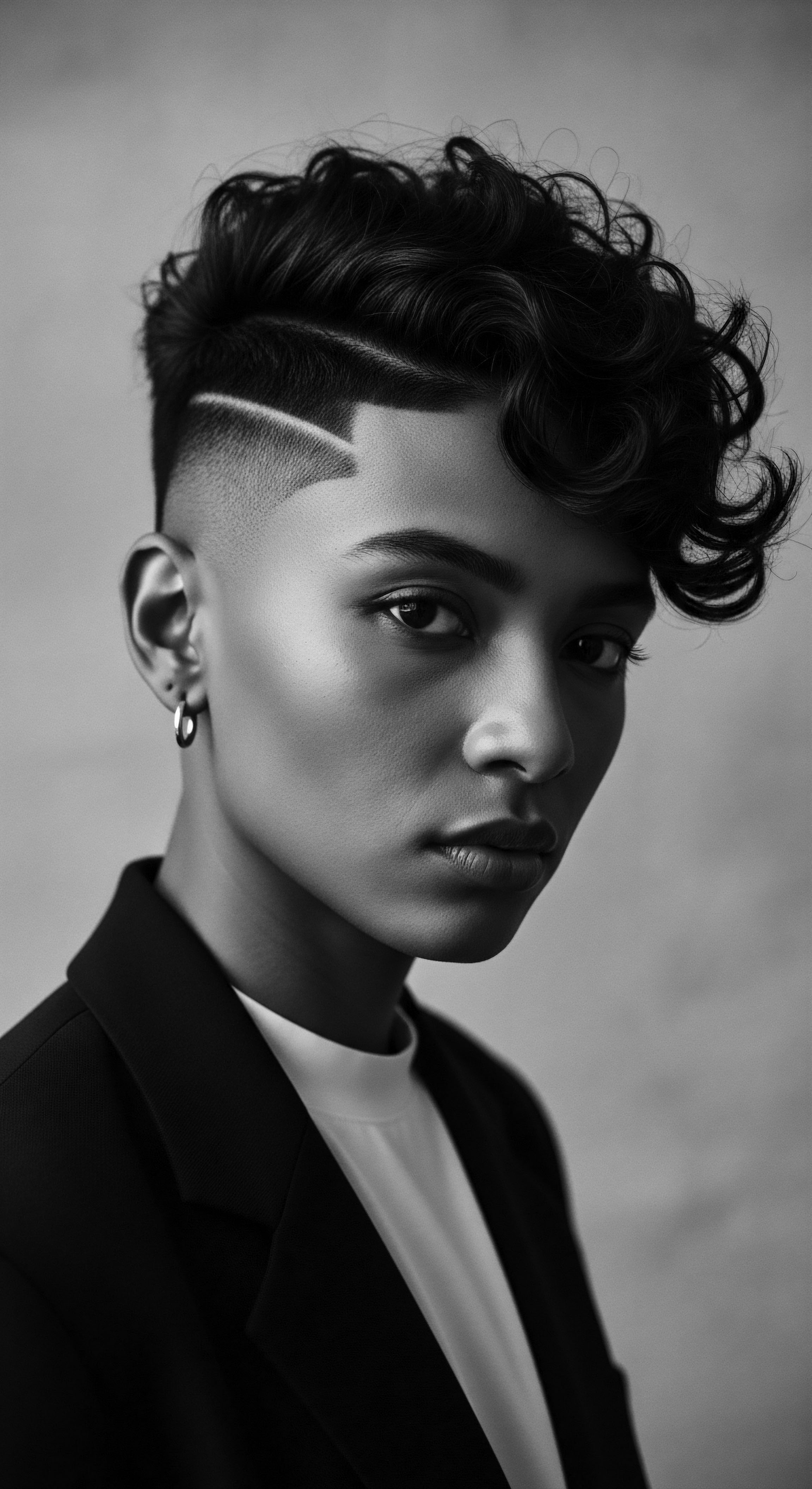
The Roots of Recognition
The earliest forms of Hair Self-Perception are often rooted in the tactile experience of hair. A child’s fingers exploring their own coils, the sensation of water on their scalp, or the feeling of a brush moving through their strands all contribute to a foundational sensory understanding. This sensory input gradually combines with visual cues and the reactions of others to form a coherent mental image of one’s hair.
- Sensory Input ❉ The touch, feel, and movement of one’s own hair.
- Visual Cues ❉ How hair appears in mirrors, photographs, and in comparison to others.
- Social Feedback ❉ Compliments, criticisms, or cultural messages received about hair.
- Emotional Connection ❉ Feelings of pride, frustration, comfort, or discomfort associated with hair.
In many ancestral traditions, this recognition was intertwined with spiritual beliefs and communal roles. Hair was a conduit, a protector, and a communicator. The respect accorded to hair in these contexts inherently shaped an individual’s perception of their own strands as something sacred, powerful, and deeply connected to their lineage. This reverence established an early, positive framework for Hair Self-Perception, emphasizing its connection to well-being and identity.
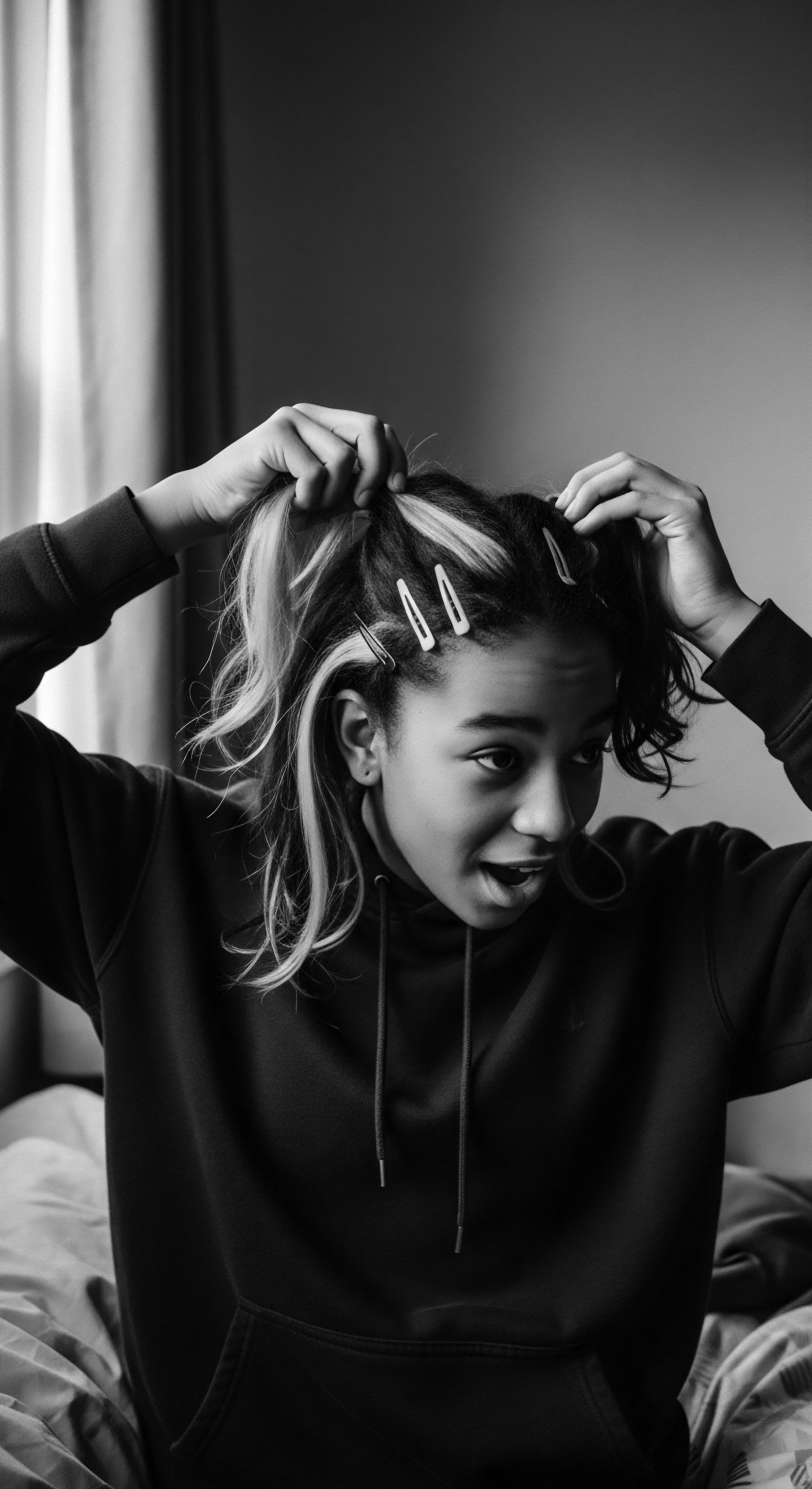
Hair as a Cultural Compass
For communities with textured hair, the Hair Self-Perception often serves as a cultural compass, guiding individuals through complex social landscapes. Historical events, such as the transatlantic slave trade and subsequent eras of systemic oppression, profoundly impacted this perception. Hair, once a symbol of status and spiritual connection in many African societies, became a target of scrutiny and a tool of subjugation in new contexts. The imposed standards of beauty, often Eurocentric, led to internal conflicts regarding hair texture and appearance.
Despite these challenges, textured hair continued to serve as a powerful symbol of resistance, identity, and communal solidarity. The very act of maintaining traditional styles, or developing new ones that honored the natural coil, became a statement of defiance and self-affirmation. This resilience, passed down through generations, forms a significant component of the contemporary Hair Self-Perception within Black and mixed-race communities. It is a testament to the enduring spirit of a people who refused to allow external pressures to fully dictate their inner sense of worth.
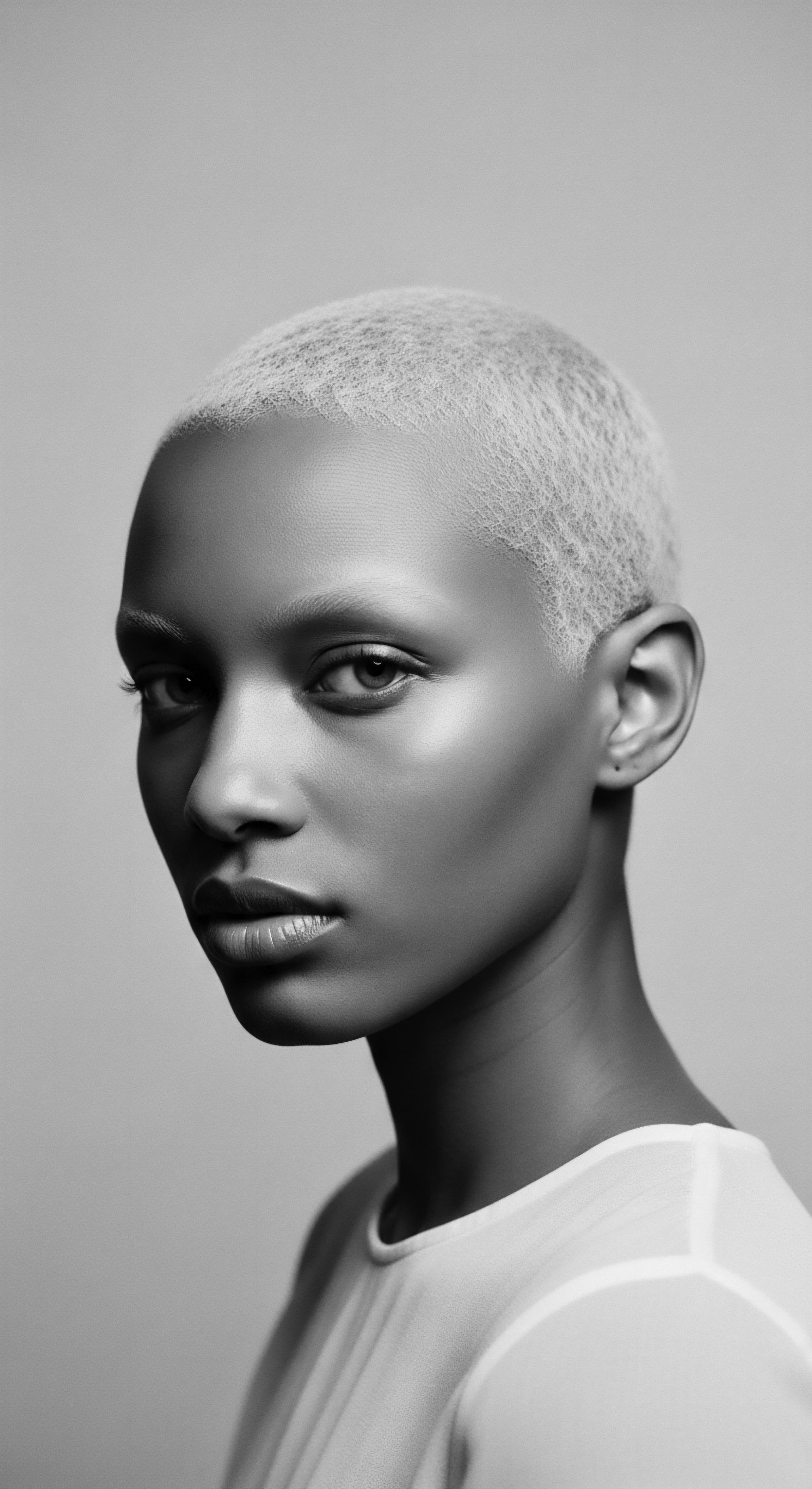
Intermediate
Moving beyond the foundational understanding, the Hair Self-Perception unfolds as a dynamic interplay between individual psychology, socio-cultural constructs, and the tangible realities of hair’s biological attributes. It is not a static concept but rather a continuously evolving interpretation of one’s hair, deeply influenced by the collective memory and lived experiences of textured hair heritage. The meaning of Hair Self-Perception, at this intermediate level, encompasses its role in personal identity formation, its influence on social interactions, and its rootedness in historical narratives of beauty and belonging.
For individuals with textured hair, this internal interpretation often carries the weight of centuries. It reflects the intricate dance between inherent beauty and societal pressures, between ancestral pride and external judgment. The perception of one’s hair can profoundly impact self-esteem, confidence, and even career trajectories, underscoring its far-reaching significance beyond mere aesthetics.
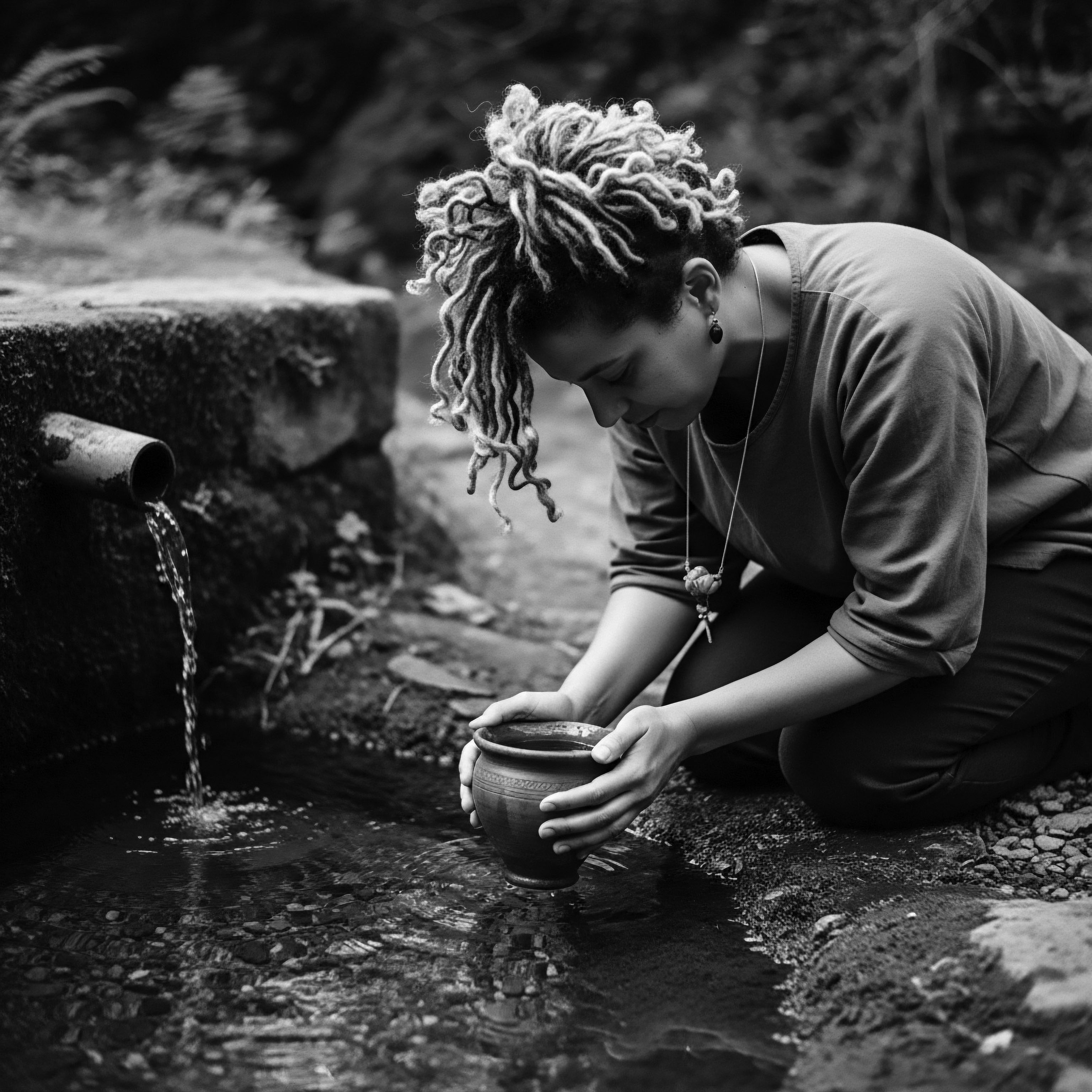
The Tender Thread ❉ Hair as a Living Tradition
The Hair Self-Perception is woven into the very fabric of living traditions. Hair care rituals, passed from elder to youth, are not simply practical acts; they are ceremonies of connection, conduits for ancestral wisdom. The hands that detangle, braid, or oil textured strands convey not only physical care but also stories, resilience, and cultural pride. This intimate transmission of knowledge shapes how one perceives their hair, instilling a sense of its value and sacredness.
Consider the communal experience of hair styling in traditional African societies, where intricate coiffures denoted status, age, and spiritual roles. The communal act of braiding, often taking hours, fostered deep bonds and reinforced collective identity. For instance, among the Fulani People of West Africa, hair was a vital marker of identity, with specific styles indicating marital status or social standing. The young girls would learn the art of braiding from their mothers and grandmothers, internalizing the significance of each twist and plait.
This practice instilled a profound sense of self-worth tied to their hair, shaping a positive Hair Self-Perception from an early age (Kalu, 1990). The care and precision involved in these practices communicated a clear message ❉ hair is worthy of attention, reverence, and artistic expression.
Hair Self-Perception is a living tradition, shaped by communal rituals and ancestral wisdom that transforms hair care into ceremonies of connection and cultural affirmation.
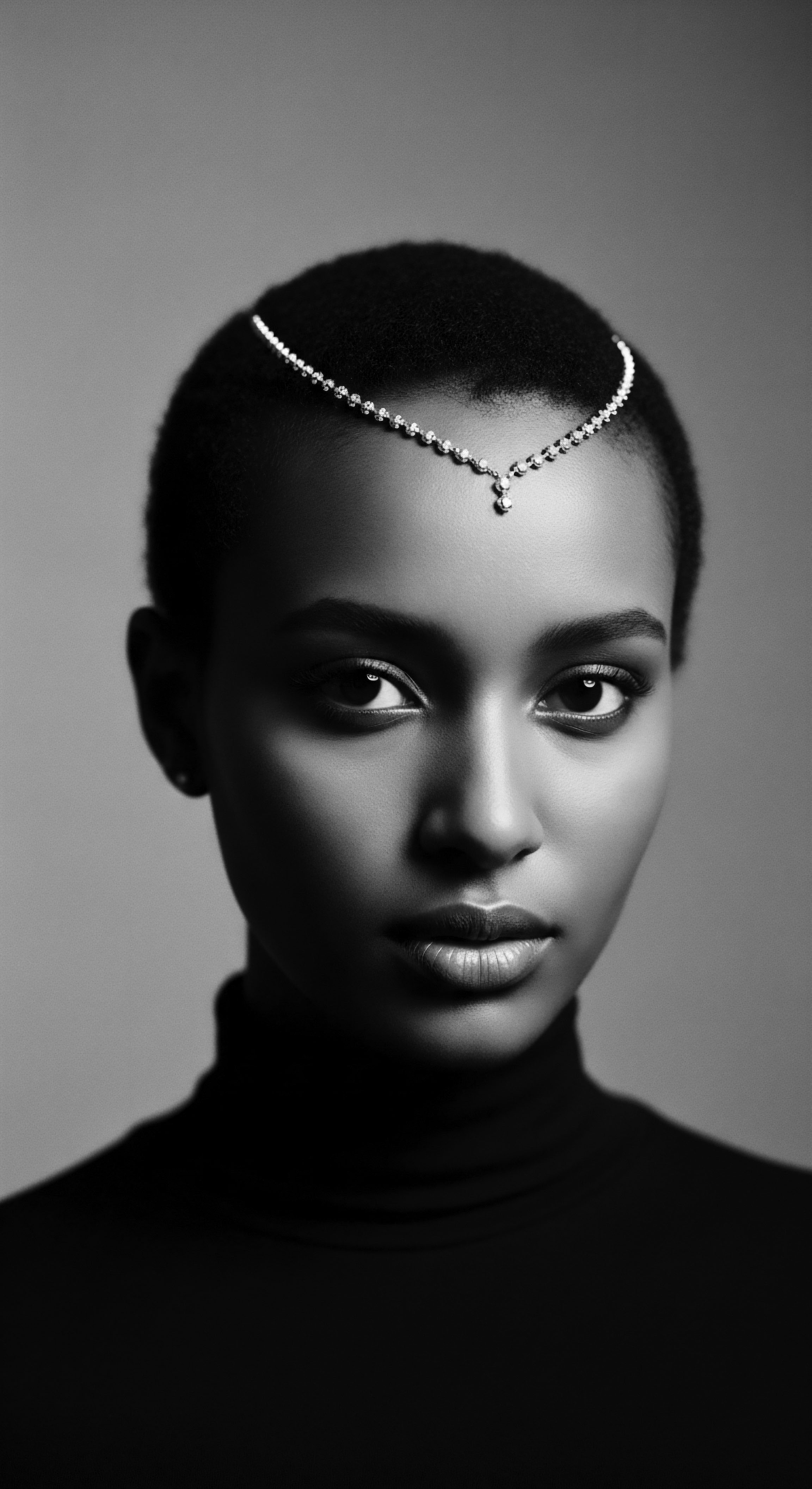
Beyond the Mirror ❉ Social Dimensions of Hair Self-Perception
The social dimension of Hair Self-Perception is particularly potent for textured hair. Throughout history, the dominant beauty paradigms have often marginalized or denigrated natural Black and mixed-race hair textures. This historical context means that an individual’s Hair Self-Perception is often formed in dialogue with these external judgments. The decision to wear hair natural, straightened, or in protective styles often becomes a statement about identity, conformity, or rebellion.
Societal attitudes toward textured hair can directly influence an individual’s self-regard. The pervasive nature of hair discrimination, from school policies to workplace biases, directly challenges a positive Hair Self-Perception. Conversely, movements celebrating natural hair, such as those that gained prominence in the 1960s and again in the 21st century, have played a vital role in shifting collective and individual perceptions, fostering a greater acceptance and pride in one’s natural texture. These movements actively work to dismantle the historical stigma, encouraging a Hair Self-Perception rooted in authenticity and cultural affirmation.
The language used to describe textured hair also holds considerable sway. Terms like “good hair” or “bad hair,” steeped in colonial legacies, have historically damaged the Hair Self-Perception of many individuals. Reclaiming and celebrating terms that accurately and respectfully describe the diversity of textured hair types becomes an act of liberation, fostering a healthier and more authentic Hair Self-Perception.
| Historical Era Pre-Colonial Africa |
| Dominant Influences on Hair Self-Perception Communal rituals, spiritual significance, status markers, artistic expression. |
| Impact on Individual Perception Generally positive, deeply integrated with identity and social standing. |
| Historical Era Slavery & Colonialism |
| Dominant Influences on Hair Self-Perception Imposed Eurocentric beauty standards, forced assimilation, denigration of natural textures. |
| Impact on Individual Perception Internalized shame, desire for conformity, struggle for identity. |
| Historical Era Post-Emancipation to Mid-20th Century |
| Dominant Influences on Hair Self-Perception Pursuit of "straight" hair for social acceptance, rise of chemical relaxers, "good hair" vs. "bad hair" dichotomy. |
| Impact on Individual Perception Complex, often conflicted Hair Self-Perception; hair as a tool for upward mobility. |
| Historical Era Civil Rights Era & Black Power (1960s-70s) |
| Dominant Influences on Hair Self-Perception Natural hair as a symbol of resistance, Black pride, cultural authenticity, political statement. |
| Impact on Individual Perception Empowerment, celebration of natural texture, collective identity affirmation. |
| Historical Era Contemporary Natural Hair Movement |
| Dominant Influences on Hair Self-Perception Digital community, holistic wellness, ancestral knowledge, diverse representation. |
| Impact on Individual Perception Renewed pride, personal exploration, informed care, decolonization of beauty. |
| Historical Era This historical trajectory reveals the resilience and adaptability of textured hair communities in shaping their Hair Self-Perception amidst shifting societal currents. |
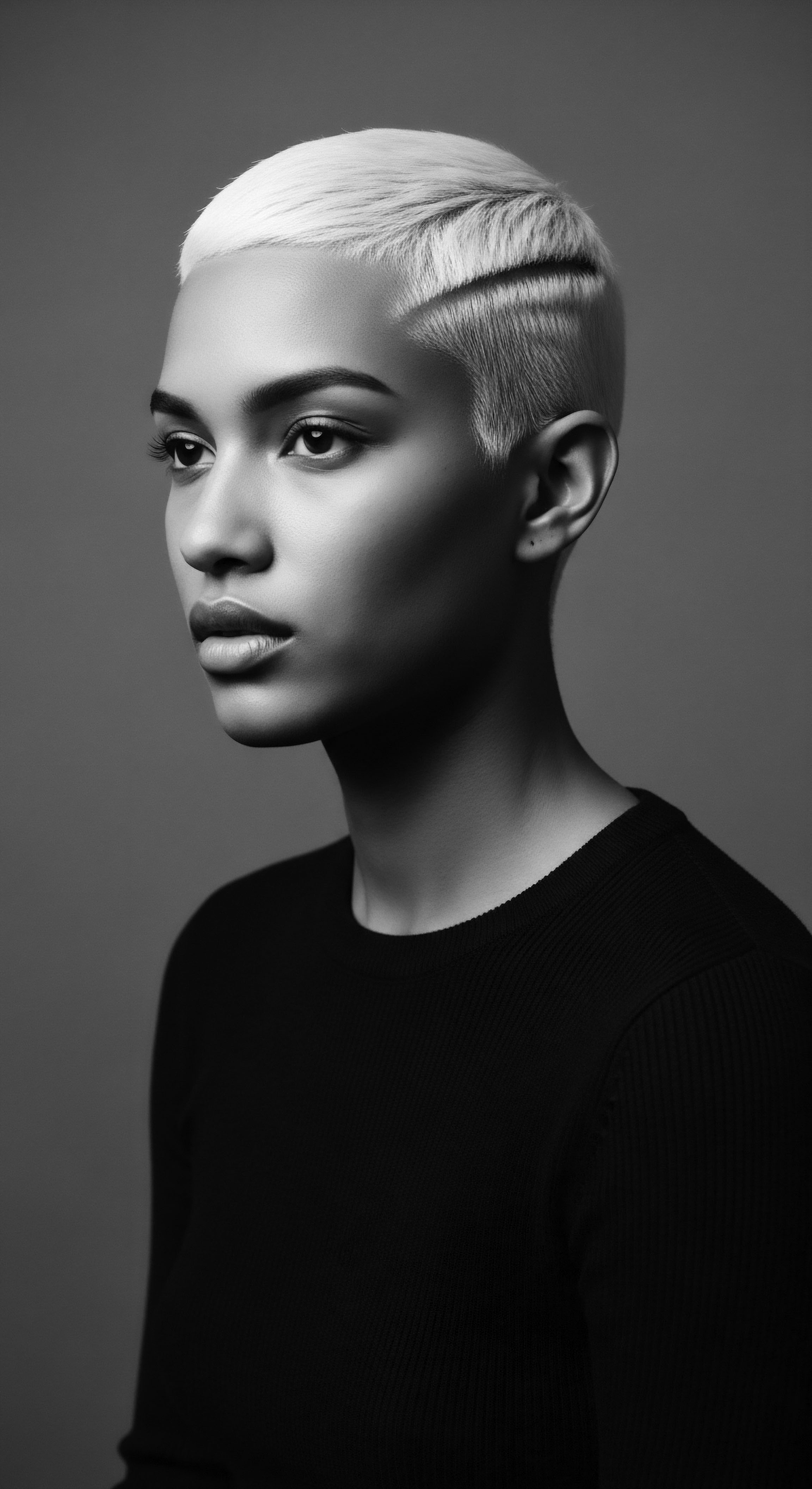
Academic
The Hair Self-Perception, viewed through an academic lens, represents a sophisticated psychosocial construct. It is the intricate cognitive and affective schema an individual develops concerning their hair, deeply informed by psychological theories of self-concept, social learning, and the profound impact of cultural hegemony on corporeal identity. The delineation of Hair Self-Perception extends beyond simple appearance; it signifies the individual’s subjective interpretation of their hair’s meaning within a given socio-historical context, particularly for those whose heritage is intertwined with the complexities of textured hair. This scholarly interpretation requires a rigorous examination of how historical power dynamics, aesthetic biases, and communal practices converge to shape this deeply personal aspect of identity.
A comprehensive explication of Hair Self-Perception necessitates an interdisciplinary approach, drawing from psychology, sociology, anthropology, and critical race theory. It is a construct that encapsulates not only an individual’s private thoughts and feelings about their hair but also the internalized societal messages, the collective memory of hair-related experiences within a community, and the adaptive strategies employed to navigate prevailing beauty standards. The significance of this concept is magnified when considering textured hair, as it often becomes a battleground for identity, acceptance, and cultural expression.
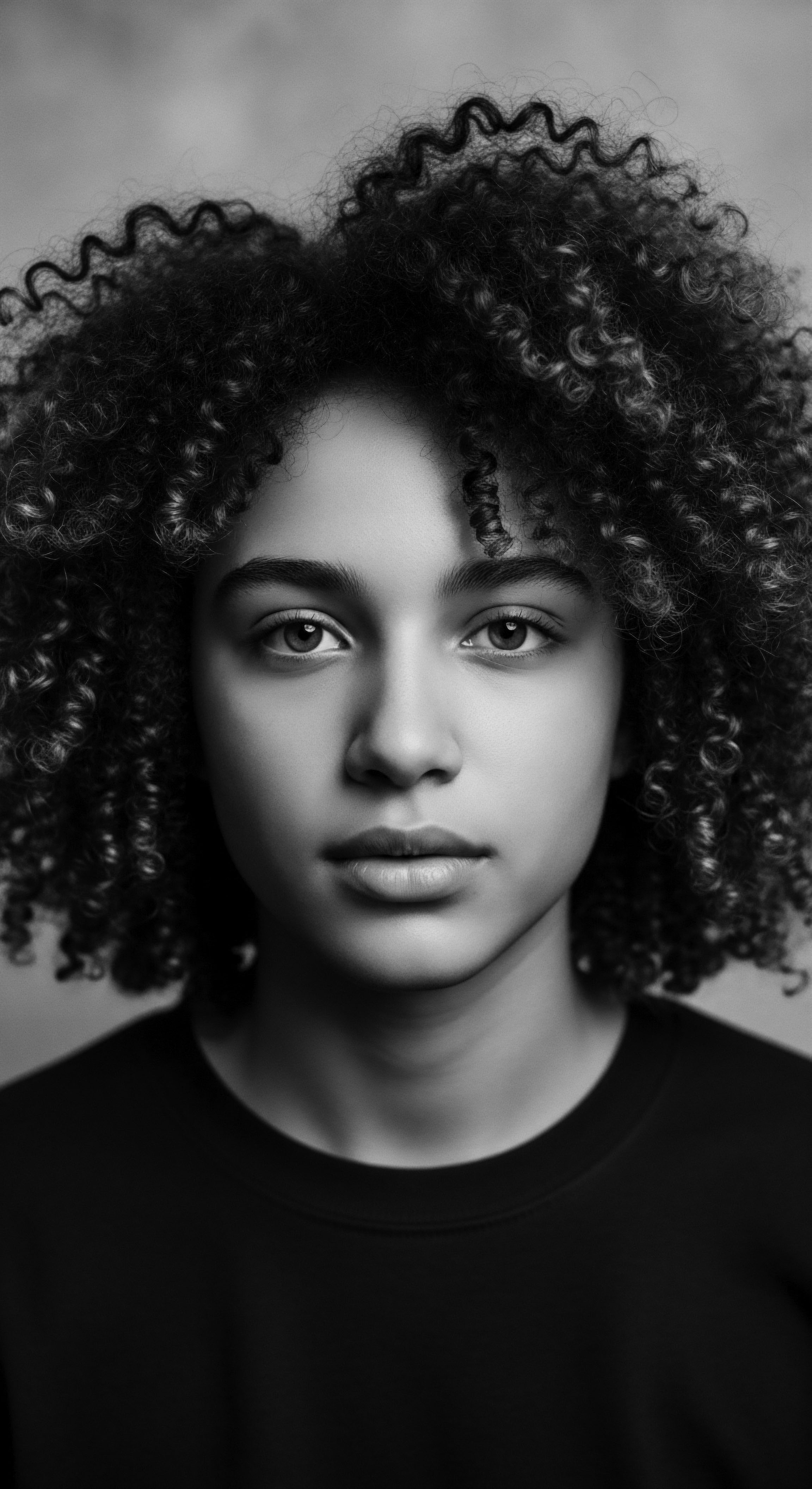
The Unbound Helix ❉ Psychological Dimensions and Cultural Resonance
From a psychological standpoint, Hair Self-Perception is an integral component of the broader self-concept. It contributes to self-esteem, body image, and overall psychological well-being. For individuals with textured hair, the development of this perception is often fraught with unique challenges, stemming from historical marginalization and the persistent influence of Eurocentric beauty ideals.
The internal struggle to reconcile natural hair texture with dominant aesthetic norms can lead to body dissatisfaction, anxiety, and even depressive symptoms. Conversely, a positive Hair Self-Perception, cultivated through self-acceptance and cultural affirmation, acts as a protective factor, enhancing psychological resilience.
Research indicates a compelling link between hair satisfaction and general life satisfaction among Black women. A study by Afiya Mbilishaka (2013) on hair identity and mental health among African American women highlights that hair is not merely an accessory but a deeply personal and political aspect of identity. Her work suggests that the process of self-acceptance regarding one’s natural hair texture can be a significant predictor of overall psychological well-being, challenging the pervasive negative stereotypes and fostering a healthier Hair Self-Perception. This academic investigation into hair identity reveals the profound impact of societal pressures on the psyche and the liberating power of embracing one’s ancestral strands.
Hair Self-Perception, particularly for those with textured hair, is a complex psychosocial construct that significantly influences self-concept, body image, and overall psychological well-being, often shaped by historical marginalization and the liberating power of cultural affirmation.
The cognitive schema associated with Hair Self-Perception includes beliefs about hair’s manageability, versatility, and attractiveness. These beliefs are not formed in a vacuum; they are continually reinforced or challenged by social interactions, media representations, and personal experiences. For instance, the perception of textured hair as “difficult” or “unprofessional” can be deeply internalized, leading to styling choices that prioritize conformity over comfort or cultural expression. Conversely, a positive cognitive framework views textured hair as versatile, resilient, and uniquely beautiful, opening pathways for diverse styling and creative expression.
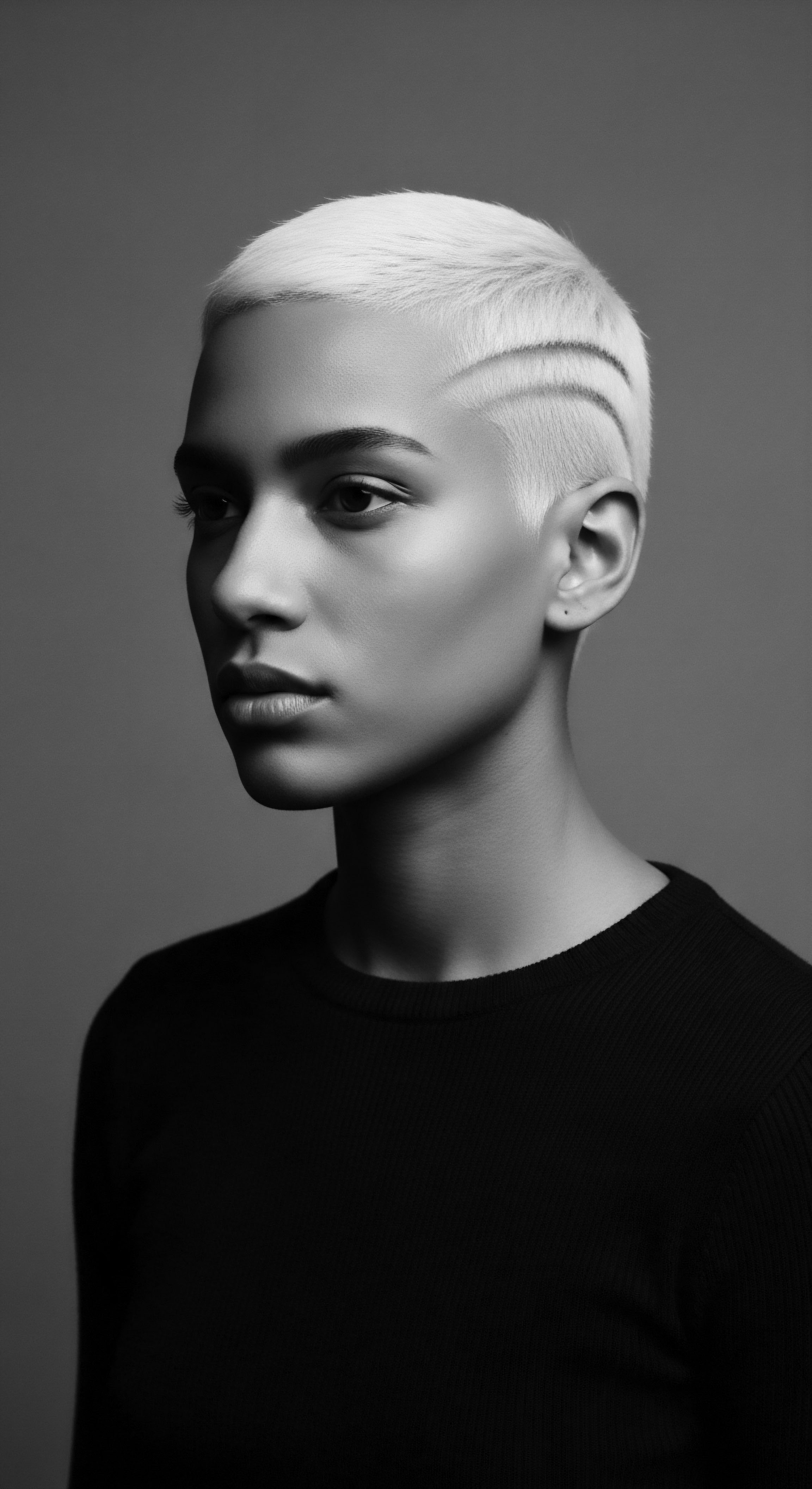
Sociological and Anthropological Intersections ❉ Hair as a Semiotic System
Sociologically, Hair Self-Perception operates as a semiotic system, where hair acts as a signifier conveying meaning about identity, social status, political affiliation, and cultural belonging. This is particularly evident in the historical and contemporary experiences of Black and mixed-race communities. During the Civil Rights Movement, the Afro became a powerful symbol of Black pride and resistance, directly influencing the Hair Self-Perception of countless individuals who embraced their natural texture as a political statement. This collective adoption of a natural aesthetic challenged dominant beauty norms and redefined the meaning of Black beauty.
Anthropological studies further illuminate the historical significance of hair as a cultural artifact. In many West African societies, hair was meticulously styled to communicate intricate social codes, spiritual beliefs, and tribal affiliations. The act of grooming was a communal affair, reinforcing social bonds and transmitting cultural knowledge.
The forced abandonment of these practices during slavery, and the subsequent pressure to adopt Eurocentric hair textures, severed a vital link to ancestral identity, leaving a lasting impact on the Hair Self-Perception of diasporic communities. The struggle to reclaim and re-establish these connections forms a crucial part of the contemporary natural hair movement, which seeks to heal historical wounds and foster a Hair Self-Perception rooted in ancestral pride.
The process of decolonizing beauty standards is central to fostering a healthier Hair Self-Perception within textured hair communities. This involves critically examining the origins of aesthetic preferences, challenging internalized biases, and celebrating the inherent beauty and diversity of natural hair textures. It is a collective endeavor that seeks to redefine attractiveness on terms that are authentic to one’s heritage, thereby empowering individuals to develop a Hair Self-Perception that is both affirming and resilient. The shift in public discourse and media representation towards embracing diverse textured hair types reflects a societal awakening, contributing to a more inclusive and validating environment for Hair Self-Perception to flourish.

Ancestral Echoes in Modern Care ❉ The Biopsychosocial Model
The Hair Self-Perception can be understood through a biopsychosocial model, which integrates biological predispositions, psychological experiences, and socio-cultural influences. Biologically, the unique structure of textured hair – its curl pattern, density, and porosity – influences how individuals interact with their hair and, consequently, how they perceive it. The challenges of managing highly coily or kinky textures, if not met with appropriate care knowledge, can contribute to negative perceptions of manageability. However, a deeper understanding of these biological attributes, often informed by ancestral practices, can transform these challenges into opportunities for specialized, nourishing care.
Psychologically, personal experiences with hair, such as positive feedback from family or negative experiences with discrimination, directly shape one’s internal schema. These experiences are then filtered through cultural lenses. Socioculturally, the historical context of textured hair, the prevailing beauty standards, and the collective narratives within a community all contribute to the formation of Hair Self-Perception.
For instance, the historical use of specific natural ingredients in ancestral hair care, such as shea butter or various plant extracts, was not merely for cosmetic effect. These practices were often imbued with cultural meaning and spiritual significance, fostering a deep respect for the hair and, by extension, a positive Hair Self-Perception. The continued use of these ingredients today, often validated by modern scientific understanding of their benefits, creates a tangible link to ancestral wisdom, reinforcing a Hair Self-Perception grounded in heritage. The understanding of these ancestral practices provides a powerful counter-narrative to imposed beauty standards, allowing individuals to cultivate a Hair Self-Perception that honors their lineage and celebrates their authentic selves.
The long-term consequences of a healthy Hair Self-Perception are far-reaching. Individuals who possess a positive internal understanding of their hair are more likely to exhibit higher self-esteem, greater confidence in social settings, and a stronger sense of cultural identity. This positive outlook can extend to other areas of their lives, influencing career choices, relationships, and overall life satisfaction.
Conversely, a negative Hair Self-Perception can contribute to internalized racism, body dysmorphia, and a reluctance to fully express one’s authentic self. Therefore, cultivating a positive Hair Self-Perception, particularly for those with textured hair, is not merely a matter of personal aesthetics; it is a critical component of psychological liberation and cultural resilience.
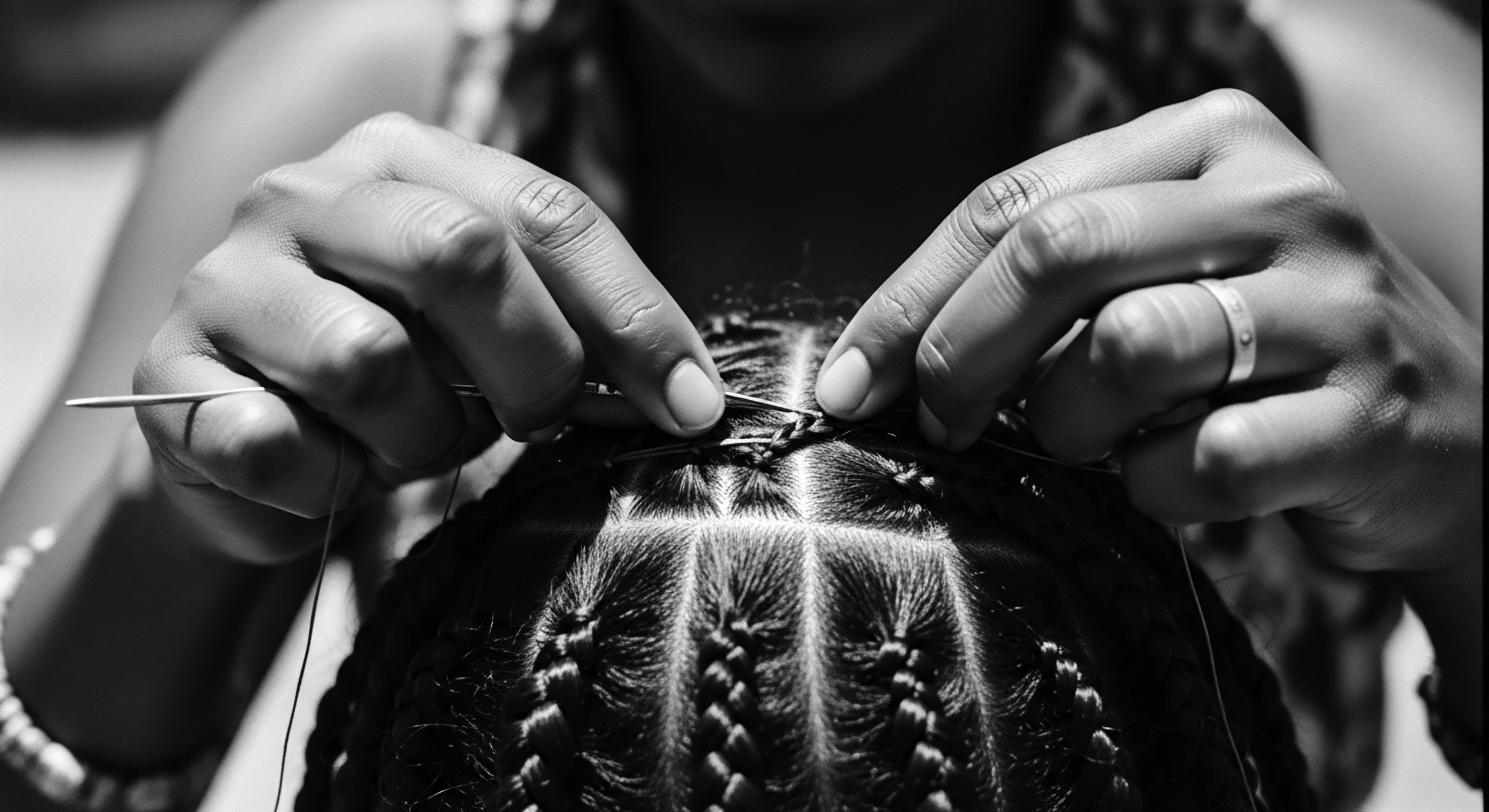
Reflection on the Heritage of Hair Self-Perception
The journey through the Hair Self-Perception, particularly when viewed through the profound lens of textured hair heritage, reveals more than a simple concept; it uncovers a living, breathing testament to resilience, identity, and ancestral wisdom. From the primordial echoes of the first human touch upon a coil, to the intricate rituals passed down through generations, to the contemporary affirmations of natural beauty, hair has always been a profound repository of meaning. It is a conduit for the stories of our foremothers and forefathers, a silent witness to struggles and triumphs, and a vibrant canvas for the ongoing declaration of self.
This enduring connection to hair, steeped in the ‘Soul of a Strand’ ethos, compels us to consider how our perception of our own hair is intrinsically linked to the collective memory of our people. Each curl, kink, and wave carries the genetic whispers of ancient lands and the lived experiences of a diaspora. The tender care we bestow upon our hair today is not merely a modern act of grooming; it is a continuation of ancestral practices, a quiet conversation with those who came before, and a powerful statement of continuity.
The understanding of Hair Self-Perception, therefore, becomes an invitation to delve deeper into our own lineage. It prompts us to honor the wisdom embedded in traditional ingredients and styling techniques, to recognize the historical significance of hair as a marker of identity and resistance, and to celebrate the boundless diversity of textured hair as a manifestation of divine artistry. It is a call to cultivate a Hair Self-Perception that is not dictated by fleeting trends or imposed standards, but rather by an authentic reverence for our heritage and an unwavering belief in our inherent beauty.
As we look forward, the legacy of Hair Self-Perception for textured hair communities continues to unfold. It is a legacy of empowerment, where individuals are increasingly reclaiming their narratives, challenging oppressive norms, and finding strength in the very strands that connect them to their past. The ongoing dialogue about hair, rooted in heritage, promises a future where every strand is celebrated, every texture revered, and every Hair Self-Perception is a source of profound pride and unwavering authenticity.
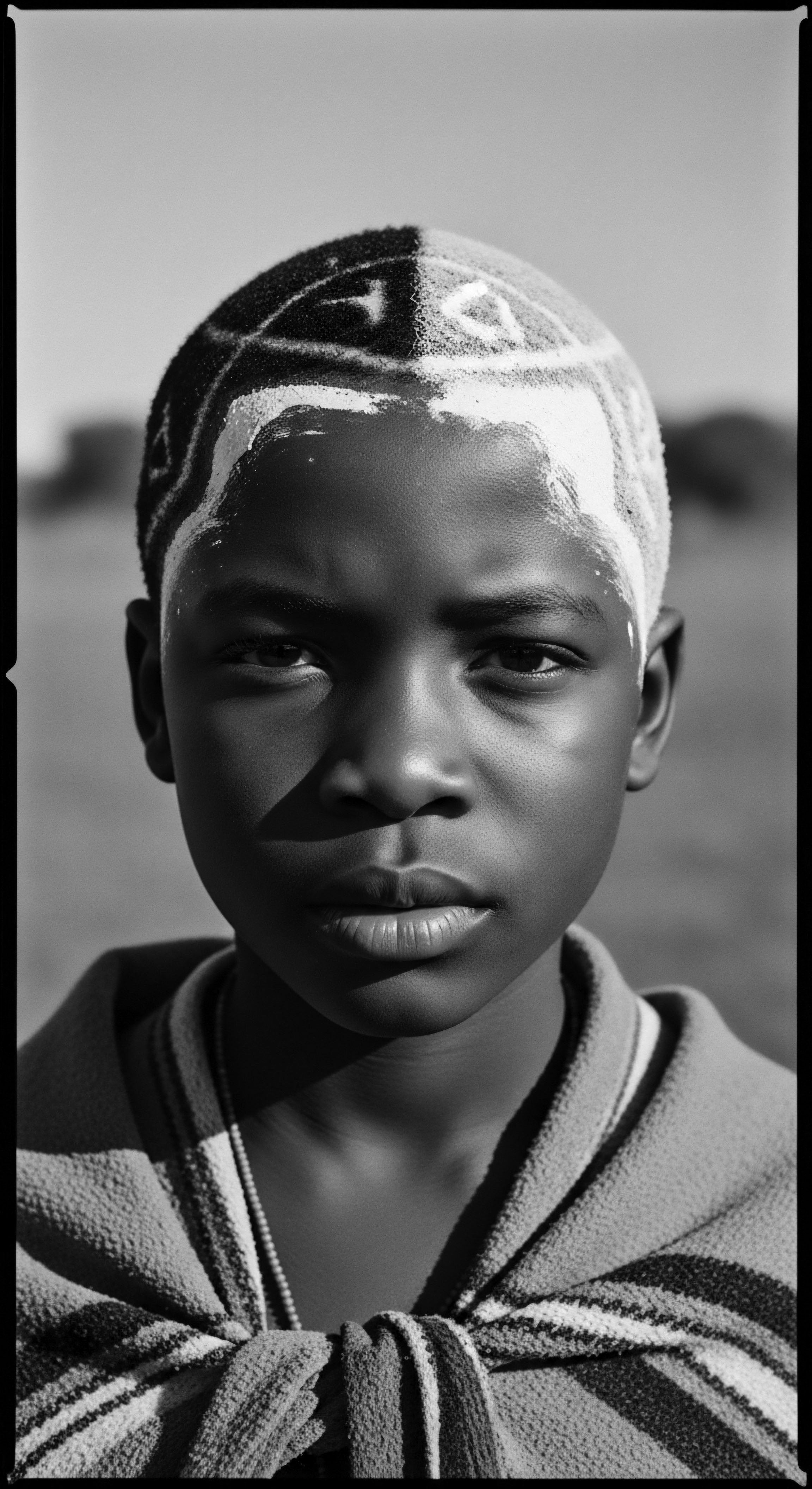
References
- Kalu, A. (1990). Women and the Social Construction of Hair in African Traditional Societies. Journal of Black Studies, 21(1), 1-14.
- Mbilishaka, A. (2013). The Psychology of Hair ❉ A Self-Care Guide for African American Women. CreateSpace Independent Publishing Platform.
- Byrd, A. D. & Tharps, L. (2014). Hair Story ❉ Untangling the Roots of Black Hair in America. St. Martin’s Press.
- Mercer, K. (1994). Welcome to the Jungle ❉ New Positions in Cultural Politics. Routledge.
- Hooks, b. (1992). Black Looks ❉ Race and Representation. South End Press.
- Thompson, C. (2008). Black Women, Beauty, and Hair as a Site of Resistance. Gender & Society, 22(5), 629-648.
- Patton, T. O. (2006). “Hey Girl, Am I More Than My Hair?” ❉ African American Women and Their Struggles with Beauty, Body Image, and Hair. Journal of Black Studies, 36(6), 888-902.
- Banks, I. (2000). Hair Matters ❉ Beauty, Power, and the Politics of Hair in African American Culture. New York University Press.
